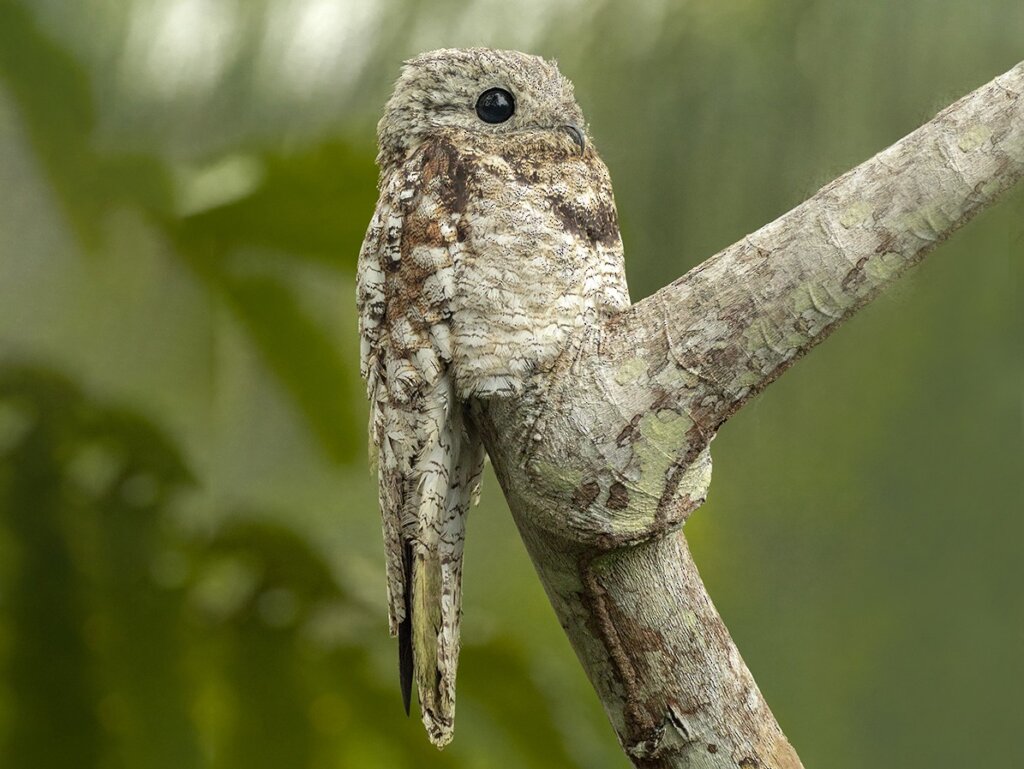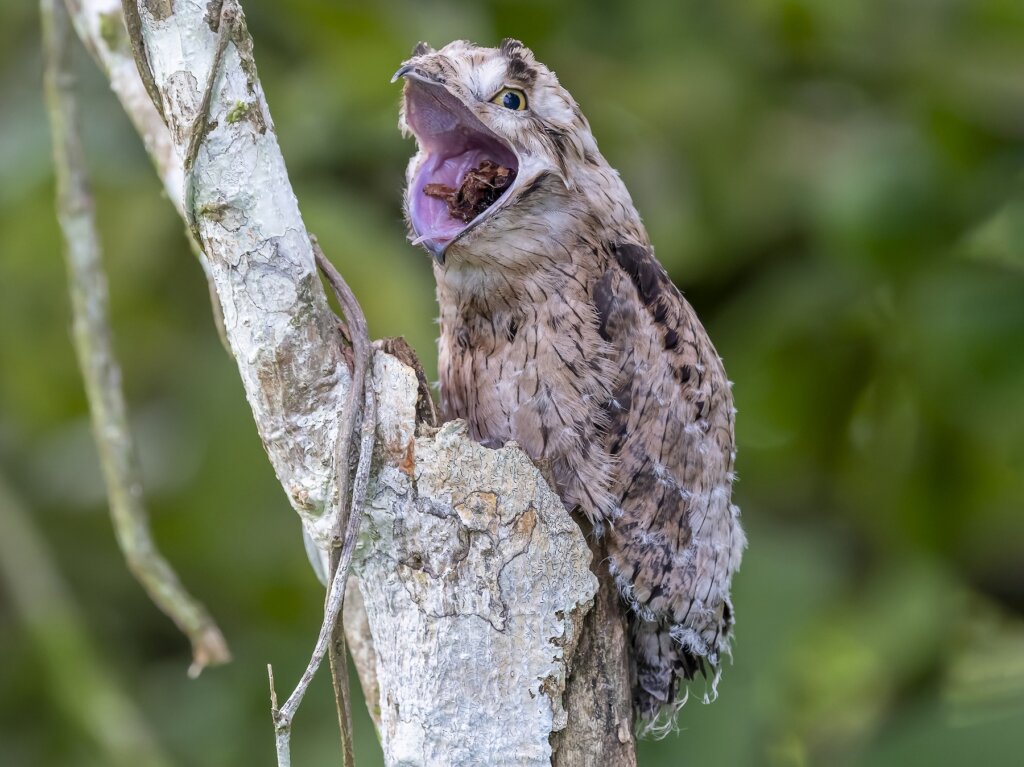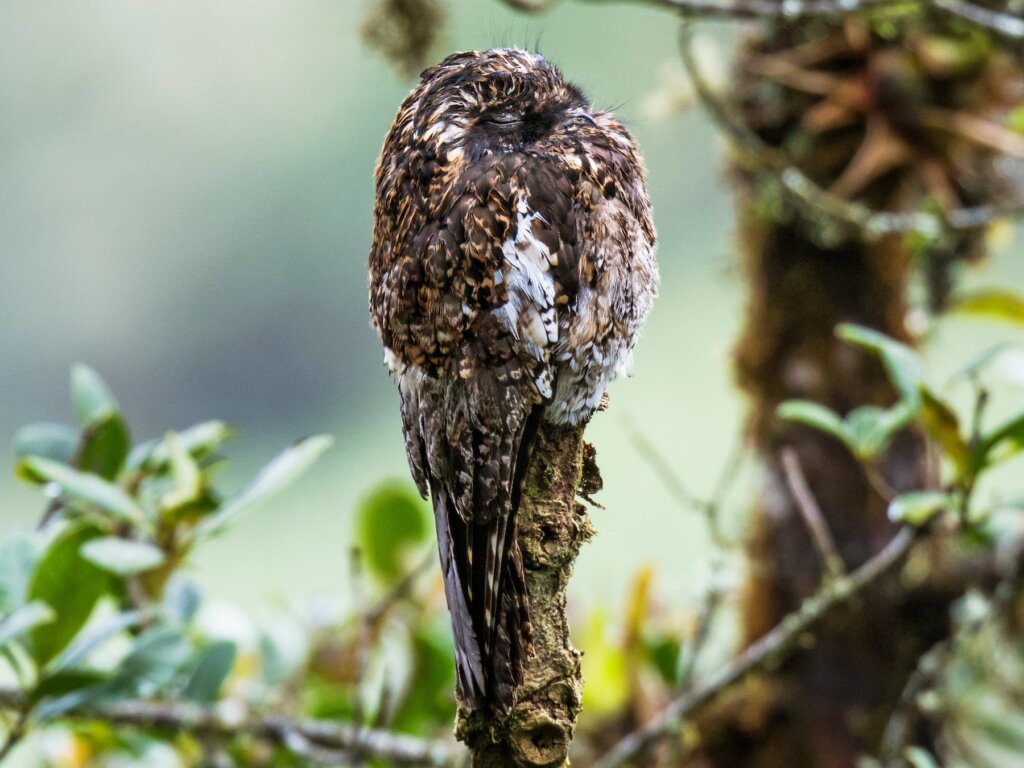Meet the Potoo, Strange but Fascinating!

In the forests and savannas of the tropical regions of the American continent, we can find an extremely unusual bird, the potoo. This animal doesn’t attract attention because of its striking colors, but because of its behavior and survival strategies (and its looks). In fact, its coloration helps it to go unnoticed in the environment. Would you like to get to know more about this peculiar bird?
It belongs to the Nyctibiidae family, which includes two genera and 7 species, all popularly known as potoos. The Nyctibius griseus is the common specimen and receives many names in different regions, including some quite unusual nicknames! Read on to find out more about this fascinating bird!
Where does the potoo live?
As we have already stated, this bird is from the Americas. It inhabits the forests, savannas, and mangroves of Central and South America, from western Mexico to northern Argentina and Uruguay. It’s found in a wide range of altitudes, from sea level to 2000 meters (6500 feet).
Physical characteristics of the potoo

The potoo isn’t a colorful bird, but has dark shades of gray to brown, although it also has some black and white spots on its body. This opaque coloring helps it to camouflage with the environment and go unnoticed, which is known as cryptic coloration, a survival strategy.
The most striking feature of this bird is its large orange and yellow eyes. Besides being beautiful, they provide the animal with valuable information about its surroundings, as they’re highly developed and can see in the dark. There are also grooves in the eyelids, which help to perceive movement when their eyes are closed. These structures are crucial for being aware of everything that is going on around them.
In general, the species of the Nyctibiidae family vary in size from 30 to 60 centimeters (12 to 24 inches). The smallest is the common potoo (N. griseus) and the largest is the large potoo (N. grandis). Other physical characteristics are as follows:
- Large head, compared to the total size of the body
- Broad, but short beak
- Long wings and tail
- Weak legs
Behavior
This bird is nocturnal and takes advantage of its cryptic plumage to remain on trunks or branches, going unnoticed. Likewise, its coloration complements its behavior, as it tends to remain motionless and with its eyes closed for most of the day.
When the bird detects an observer or threat nearby, it places its head in an upright position and closes its eyes to appear more imperceptible. Movements are made slowly, so as not to attract too much attention.
An interesting fact is that this bird can detect movement from any direction. This includes the back, as the feathers behind the eye can be compressed. The field of vision is about 180°, an important aspect that’s helps them be aware of everything that’s going on.
Song
The sound emitted by the potoo is very strange and can be disturbing. It resembles people wailing, so listening to it at night is even a little scary. This type of song has given rise to numerous stories and legends in the different regions where the bird is found.
Thanks to its song and its almost imperceptible appearance, this bird, commonly known and the ghost bird or witch is considered unlucky.
Potoo feeding
The potoo is an insectivorous bird, that is, it consumes various types of insects. When it sees prey nearby, it makes a short, silent flight to capture it and returns to its branch. The diet includes termites, grasshoppers, crickets, cockroaches, mantids, beetles, moths, among others.
Migration
Some researchers think that these bird species may be migratory, especially during the cold months in Argentina, southeastern Brazil, and Paraguay. This is due to their morphology (long pointed wings) and to the few observations during the mentioned season.
However, experts aren’t sure about this, and still others claim they remain in their own area. Likewise, its camouflage and nocturnal, motionless behavior during the day makes it difficult to observe and to study in its natural habitat.
Reproduction of the potoo
There are also some interesting aspects about the reproduction of this Neotropical bird. It’s a monogamous bird, which means that it has one mate throughout its life. The female can only lay one egg, but the amazing thing is that they don’t build nests, but use concave ends of truncated branches.
The eggs are large, white, with lilac and brown spots on the surface. Both sexes perform parental care, both during incubation (about 1 month) and during the first weeks of the chick’s life. The young are born with whitish down.
Conservation status

This type of bird is widely distributed in the Americas. All species of the Nyctibiidae family are in the category of least concern, according to the International Union for Conservation of Nature (IUCN), including the common potoo.
In summary, the potoo is a bird endemic to the American continent that holds many legends, thanks to its appearance, its ability to remain so still, and its disturbing song. It’s a bird that prefers to spend its life without attracting attention, an interesting strategy that has helped it to survive in the forests and savannas where it lives.
All cited sources were thoroughly reviewed by our team to ensure their quality, reliability, currency, and validity. The bibliography of this article was considered reliable and of academic or scientific accuracy.
- BirdLife International. (2020). Nyctibius griseus. The IUCN Red List of Threatened Species2020: e.T22689646A163600335.
- Borrero, J. (1974). Notes on the Structure of the Upper Eyelid of Potoos (Nyctibius). The Condor, 76(2), 210–211.
- Quiroga, O., & Llugdar, J. (2019). Distribución y reproducción del urutaú común (Nyctibius griseus) en Santiago del Estero, Argentina. Ecoregistros, 9(6), 21-27.
- Richar, E., Contreras, D., Aguilar, P., Delgado, C., Aveiga, A., Cobeña, H. (2019). Actividad de forrajeo de Nyctibius griseus en un área urbana del Ecuador y su potencial como controlador biológico. En: C. D. López, I. Salgado, S. Ulloa, Puerta de Armas (Eds). V Congreso Iberoamericano sobre Ambiente y Sustentabilidad – Ecuador. Universidad Estatal del Sur de Manabí Del 10 al 14 de junio 2019. Jipijapa, Ecuador (págs. 591-596).
- Sánchez-Martínez, M., & Yusti-Muñoz, A. (2016). Notas sobre la anidación del bienparado común (Nyctibius griseus) en el valle geográfico del río Cauca (Cali, Colombia). Ornitología Tropical, 27: 125–132.
